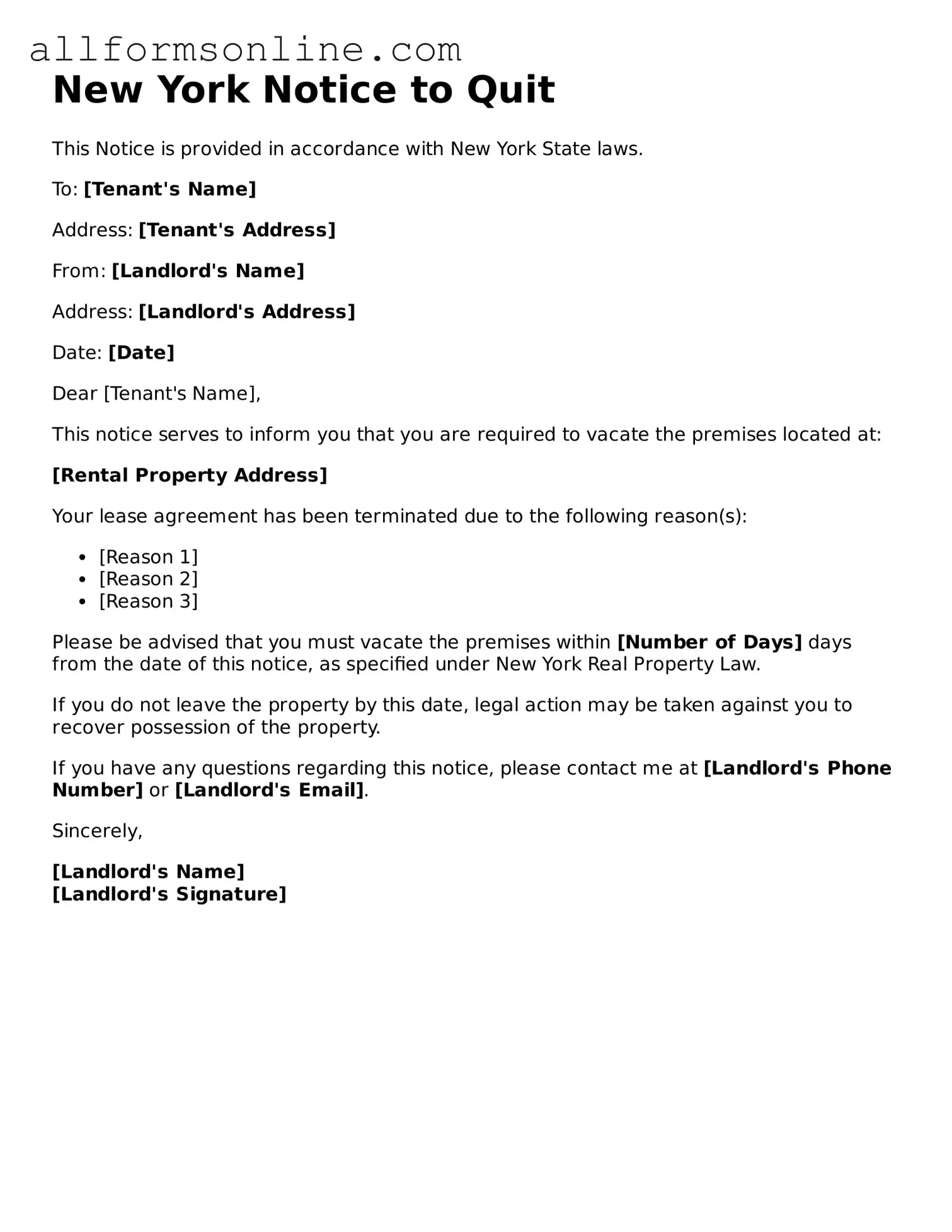What is a Notice to Quit in New York?
A Notice to Quit is a formal document that a landlord issues to a tenant when they wish to terminate a rental agreement. This notice informs the tenant that they must vacate the premises by a specified date. In New York, this document is crucial as it sets the stage for potential eviction proceedings if the tenant does not comply. It’s important for both landlords and tenants to understand this process to ensure their rights are protected.
How much notice must a landlord give to a tenant in New York?
The amount of notice required can vary based on the reason for the eviction. For example, if a tenant has not paid rent, a landlord typically must provide a 14-day notice. However, if the eviction is due to lease violations or other reasons, the notice period may differ. Always check the specific terms of the lease and local laws to ensure compliance with the required notice period.
Can a tenant contest a Notice to Quit?
Yes, a tenant can contest a Notice to Quit. If a tenant believes the notice was issued unfairly or without proper cause, they have the right to respond. This may involve communicating with the landlord to resolve the issue or seeking legal assistance. It’s important for tenants to act quickly, as failing to respond may lead to an eviction proceeding.
What happens if a tenant does not leave after receiving a Notice to Quit?
If a tenant does not vacate the property by the date specified in the Notice to Quit, the landlord may proceed with eviction proceedings. This typically involves filing a petition in housing court. The court will then schedule a hearing where both the landlord and tenant can present their cases. It’s essential for tenants to understand their rights and possibly seek legal advice if they find themselves in this situation.
Is a Notice to Quit the same as an eviction notice?
No, a Notice to Quit is not the same as an eviction notice. The Notice to Quit is the first step in the eviction process, serving as a warning to the tenant to leave the property. An eviction notice, on the other hand, is issued after the Notice to Quit if the tenant fails to comply. It’s a more formal step that can lead to court proceedings. Understanding the distinction between these two notices can help both landlords and tenants navigate the rental process more effectively.
